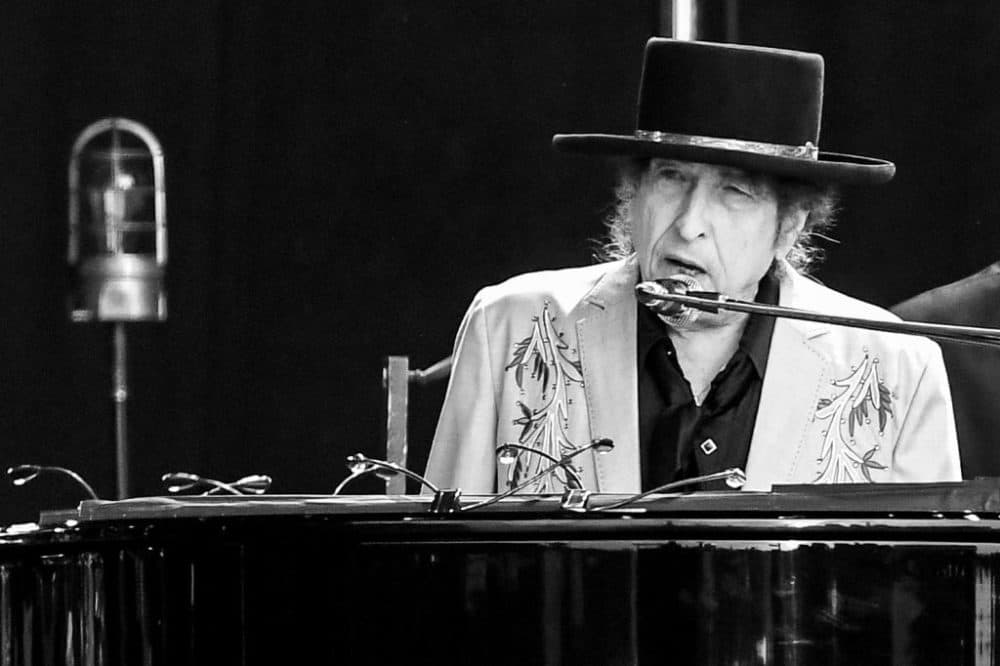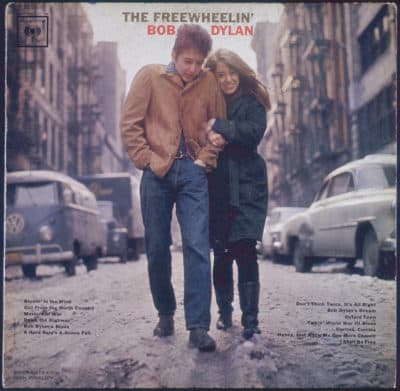Advertisement
Commentary
Bob Dylan Turned 80 This Week. He’s Been With Me All Along

Bob Dylan turned 80 years old earlier this week, on May 24. For those of us who experienced him as a rebel of the 1960s, it's difficult to imagine him as an octogenarian. And yet, he’s still here: seemingly as indefatigable as ever in his desire to write songs and take his music on the road.
I loved Bob Dylan before I even knew his name.
In the summer of 1963, the year I turned 10, I discovered the music of Peter, Paul and Mary. The artist couple who taught arts and crafts at the summer camp my father ran played the famous folk trio’s first three albums continually in their studio. I was entranced the moment I heard them. It was the first music in my life I felt passionate about, and it had an enormous impact on my musical tastes going forward.
At the end of the summer, the artist couple gave me the Peter, Paul, and Mary album entitled “In the Wind.” I listened to it over and over again; my two favorite songs were “Blowin’ in the Wind” and “Don’t Think Twice, It’s All Right.” I knew I loved those songs; it never occurred to 10-year-old me to wonder who had written them.
Two years later, in 1965, I had my first proper introduction to Bob Dylan. That was the year my family moved from a small town in the Finger Lakes to Rochester, New York, and my parents divorced. Sensing my sadness, my mother bought me a clock radio, and I started listening to Rochester’s most popular Top 40 AM radio station. Toward the end of July that year, the station began to play a new song, “Like a Rolling Stone.” It immediately grabbed my attention.
Bruce Springsteen was in the car with his mother when he first heard “Like a Rolling Stone.” He said it was as if “somebody kicked open the door to your mind.” For me, it was more like someone had ripped open a window into my emotions. In the wake of my parents’ separation, I was feeling confused, uncertain, scared, sad and lonely. But there was something about the way Dylan sang out the line “How does it feel?” that electrified me. It felt as though he’d tracked me down in my bedroom and challenged me to stop being so numb — to think about what I was feeling.
Advertisement

It took a couple of more years for me to figure out that the Bob Dylan who wrote “Like a Rolling Stone” also wrote “Blowin’ in the Wind” and “Don’t Think Twice.” Once I did, I ran out and bought “The Freewheelin’ Bob Dylan.” It was one of the first albums I ever owned. I almost wore the vinyl smooth I played it so many times.
I wasn’t the only one mesmerized by “Freewheelin’.” The Beatles were in Paris in 1964 when they first got hold of a copy. John Lennon later wrote: “For three weeks in Paris we didn’t stop playing it. We all went potty about Dylan.” Many music critics have written about how The Beatles’ lyrics became more complex, more literary and more political in the wake of hearing Dylan for the first time.
Johnny Cash was similarly affected by Dylan’s famous second album. Cash had a portable record player that he took with him when he was touring. He would listen to Dylan’s “Freewheelin’” before he went out to do a show, he wrote in his autobiography, and then immediately start playing it again when he came off the stage.
From “Freewheelin’” I quickly moved on to Dylan’s three great electric albums: “Bringing It All Back Home,” “Highway 61 Revisited” and “Blonde on Blonde.” I can still feel a sense of exhilaration when I listen to these albums. Is there anything more thrilling than to experience the work of a great artist at the height of his or her powers?
Even the titles of some of Dylan’s songs from this period --"Subterranean Homesick Blues,” “It Takes a Lot to Laugh, It Takes a Train to Cry,” “Stuck Inside of Mobile with the Memphis Blues Again”-- are small works of art.
Although I strongly associate Dylan’s music with my youth, he has been there every step of the way throughout my life. Not surprisingly, then, news of his 80th birthday stirred up feelings about my own mortality. As usual, Dylan put it best in one of his songs: “It’s not dark yet but it’s getting there.”
Dylan’s greatest work may be behind him and his voice worn out, but for those of us who came of age in the 1960s, his songs are ingrained in our DNA. They continue to provide both joy in the present and memories of our younger selves.
So here’s a tip of the hat to Bob Dylan at 80: “In the jingle jangle morning I’ll come following you.”


